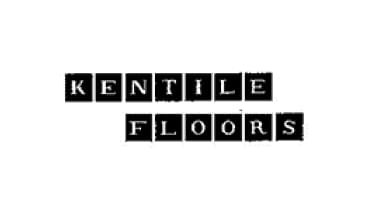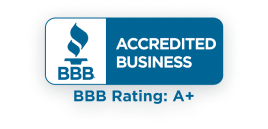
Sean Fitzgerald, PG, is a research geologist specializing in asbestos environmental studies.
Founded in 1898 by Arthur Kennedy in Brooklyn, New York, Kentile Floors produced vinyl, cork and rubber floor tiles. Kentile specialized in large, durable tiles made of a range of materials, including as much as 25 percent asbestos.

Many remember Kentile Floors for the company’s 8-story sign visible from the Gowanus Expressway in Brooklyn. When lit up in bright neon purple, the sign could be seen from miles away. Unfortunately, the company is also remembered for using asbestos in a wide range of flooring materials.
During the 1950s and 1960s, Kentile became one of the nation’s largest manufacturers of resilient floor tile and a leading distributor across the country. The company advertised its products in publications like Popular Science and promoted them as durable, greaseproof and easy to clean. Kentile highlighted asbestos fibers as a selling point, calling them sturdy and heat resistant.
By 1969, Kentile expanded into vinyl sheet flooring, which had asbestos backing that crumbled easily when disturbed. This created serious asbestos exposure risks for workers, homeowners and those who installed or repaired the flooring. Asbestos can lead to serious respiratory conditions including mesothelioma, lung cancer and asbestosis.
Kentile Floors manufactured and sold asbestos products for decades, especially in floor tiles that became common in homes, schools and commercial buildings. The company relied on asbestos for its strength, low cost and heat resistance.
Asbestos-Containing Kentile Flooring Product
Kentile promoted its tiles as durable, greaseproof and easy to clean, often pointing to asbestos fibers as a benefit. While cork tiles themselves likely didn’t contain asbestos, Kentile’s vinyl tiles made to look like cork did.
Kentile Floors workers those who worked with the company’s products were at increased risk of asbestos exposure. Occupational asbestos exposure is the leading cause of mesothelioma.
Higher-Risk Occupations
Workers outside the flooring trade often faced exposure during demolition, remodeling or floor replacement. Cutting, grinding or breaking Kentile tiles released asbestos fibers into the air, where people could inhale or swallow them. For example, janitors polishing or stripping floors often disturbed the tiles and faced similar risks.
Teachers and students faced exposure risks from Kentile’s asbestos floor tiles in schools. Everyday activities like moving desks, scraping them across worn or damaged tiles could potentially release fibers into the air. These airborne asbestos fibers could then be inhaled or swallowed.
The general public could encounter asbestos fibers in older buildings where Kentile flooring remains in place. Walking on worn or damaged tiles or accidental impacts could release fibers.
DIY home renovators and hobbyists also risked asbestos exposure. Cutting, sanding or removing tiles during remodeling could release dangerous asbestos fibers in the home. Anyone interacting with these floors should exercise caution and consider professional asbestos removal if they suspect the tiles contain asbestos.

You shouldn’t have to choose between getting care and paying for it. Get the financial support you deserve.
See My OptionsFacing thousands of asbestos lawsuits from people exposed to its products, Kentile filed for bankruptcy in 1992. The company reorganized as Metex Manufacturing Company in 1998 and assumed Kentile’s asbestos liabilities. Initially, Kentile faced about 20,000 claims, and as Metex, it became responsible for ongoing lawsuits.
In 2014, Metex filed for bankruptcy again with roughly 6,000 active claims. A court approved the Metex Asbestos PI Trust in 2015 to pay both current and future claims while shielding the company from personal injury lawsuits. The trust started with $193 million, and in June 2020, the payment percentage was reduced to 7.25%, a standard level for asbestos trust funds. Payments are adjusted over time to ensure funds remain available for future claimants.
In July 2023, the trust added extra compensation, called a sequencing adjustment, for people who wait a year or more for their payment because of delays in processing. These adjustments apply only to certain types of claims and are based on a capped interest rate. Claims already paid through the courts don’t qualify.
Kentile Floors had already faced thousands of individual injury claims before filing for bankruptcy in 1992 and reorganizing as Metex Manufacturing Company in 1998. William and Judith Harrell filed their lawsuit after the bankruptcy but before the asbestos trust began paying claims, a period when Metex remained directly responsible for Kentile’s asbestos liabilities.
The Harrells’ lawsuit alleged that asbestos in Kentile flooring contributed to Judith Harrell’s injuries. In August 2010, a jury found Kentile partially responsible for her pain and suffering. The jury determined that asbestos from Kentile products, along with asbestos from Ford Motor Co, ExxonMobil and Georgia-Pacific products, played a role. The award totaled nearly $1.6 million, and Kentile was responsible for 6% of that amount.
This case shows how asbestos exposure from Kentile products harmed people long after installation. Asbestos litigation often involves multiple manufacturers because asbestos was widely used in building materials.
Recommended ReadingStay up-to-date on treatment, research, clinical trials, doctors and survivors
The information on this website is proprietary and protected. It is not a substitute for professional medical advice, diagnosis or treatment. Any unauthorized or illegal use, copying or dissemination will be prosecuted. Please read our privacy policy and terms of service for more information about our website.
This website and its content may be deemed attorney advertising. Prior results do not predict a similar outcome.
The Mesothelioma Center’s claim as the most trusted resource is based on our more than 150 5-star Google and BBB reviews. Our organization also helps more than half of all mesothelioma patients annually diagnosed.
Your web browser is no longer supported by Microsoft. Update your browser for more security, speed and compatibility.
If you are looking for mesothelioma support, please contact our Patient Advocates at (855) 404-4592
The Mesothelioma Center at Asbestos.com has provided patients and their loved ones the most updated and reliable information on mesothelioma and asbestos exposure since 2006.
Our team of Patient Advocates includes a medical doctor, a registered nurse, health services administrators, veterans, VA-accredited Claims Agents, an oncology patient navigator and hospice care expert. Their combined expertise means we help any mesothelioma patient or loved one through every step of their cancer journey.
More than 30 contributors, including mesothelioma doctors, survivors, health care professionals and other experts, have peer-reviewed our website and written unique research-driven articles to ensure you get the highest-quality medical and health information.
My family has only the highest compliment for the assistance and support that we received from The Mesothelioma Center. This is a staff of compassionate and knowledgeable individuals who respect what your family is experiencing and who go the extra mile to make an unfortunate diagnosis less stressful. Information and assistance were provided by The Mesothelioma Center at no cost to our family.LashawnMesothelioma patient’s daughter


Asbestos.com. (2025, October 8). Kentile Floors. Retrieved December 8, 2025, from https://www.asbestos.com/companies/kentile-floors/
"Kentile Floors." Asbestos.com, 8 Oct 2025, https://www.asbestos.com/companies/kentile-floors/.
Asbestos.com. "Kentile Floors." Last modified October 8, 2025. https://www.asbestos.com/companies/kentile-floors/.
An occupational scientist or another expert who specializes in occupational hazards reviewed the content on this page to ensure it meets current scientific standards and accuracy.

Sean Fitzgerald, PG, is a research geologist specializing in asbestos environmental studies.
Our fact-checking process begins with a thorough review of all sources to ensure they are high quality. Then we cross-check the facts with original medical or scientific reports published by those sources, or we validate the facts with reputable news organizations, medical and scientific experts and other health experts. Each page includes all sources for full transparency.
Please read our editorial guidelines to learn more about our content creation and review process.
